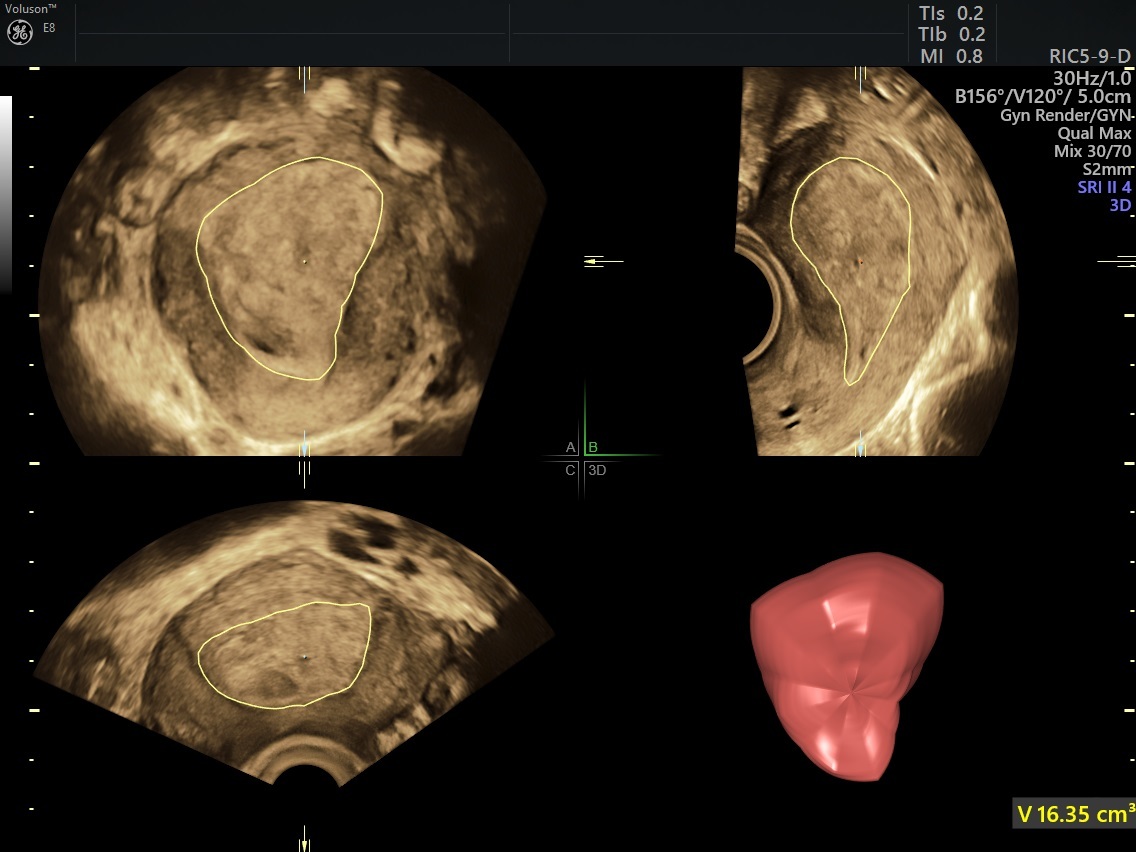For women undergoing in vitro fertilization (IVF), successful embryo transfer depends on several factors. Given that some tools and methods are still undergoing research, clinicians should consider a number of different approaches — including measuring endometrial thickness, vascularity and volume — to help improve embryo implantation and predict pregnancy.
Measuring Endometrial Receptivity, Thickness and Vascularity
When you're predicting a patient's ability to achieve a healthy pregnancy, one of the most critical factors is endometrial receptivity. Receptivity is partly determined by the blood flow to the endometrium. Currently, the thickness of the endometrium is considered the most significant parameter for endometrial receptivity in women looking to transfer embryos. A study in Reproductive Biology and Endocrinology found pregnancy rates to be lower in patients with an endometrial thickness of less than 7 mm, compared with patients with an endometrial thickness of more than 7 mm.

Measurement of Endometrial Thickness
Endometrial vascularity plays a crucial role in helping predict successful embryo implantation, and its assessment has been increasingly recognized as key to the success of IVF. One effective tool for objectively measuring endometrial and subendometrial blood flow is 3D ultrasound with color Doppler, according to a study published in the Egyptian Journal of Radiology. The researchers suggest that if a patient has non-favorable endometrial blood flow zone on the day of human chorionic gonadotropin (hCG) administration in IVF or intracytoplasmic sperm injection (ICSI) cycles, they are unlikely to get pregnant and embryo transfer should be canceled to increase the likelihood of future success.
The Value of Measuring Endometrial Volume
Although endometrial volume is less commonly used as a parameter for embryo transfer, clinicians are becoming increasingly interested in its measurement using VOCAL (Virtual Organ Computer-aided AnaLysis) software with 3D ultrasound. While research continues in this area, a study in Ultrasound in Obstetrics and Gynecology found VOCAL to be an unparalleled tool for mapping the contours and surface of the endometrium and a highly reproducible method when measurements were taken during ovarian stimulation.
Research published in Human Reproduction, meanwhile, found that pregnancy and implantation rates were significantly lower in patients with an endometrial volume of less than 2 ml. A low endometrial volume may even predict pregnancy loss in women who undergo IVF.

Endometrial Volume Calculation Using VOCAL
In 2018, researchers found that endometrial volume was significantly greater on the day of hCG triggering in women who later became pregnant than in those who did not. However, additional studies have found that endometrial volume is a less reliable predictor of pregnancy than other factors, such as vascularity.
The relationship between these factors has also been heavily studied. Endometrial vascularity is important for fostering endometrial receptivity, and patients with a low endometrial volume often have drastically reduced blood flow to the endometrium, according to Reproductive Biomedicine.
Embryo Transfer Methods
Besides the condition of the endometrium, embryo quality and the transfer method used are also important factors in IVF success. According to the International Journal of Reproductive BioMedicine, there is little difference between the use of fresh or frozen embryos: transfers of fresh embryos resulted in a 23 percent pregnancy rate, whereas frozen embryos had an 18 percent pregnancy rate.
Distance to fundus has also been studied, with research from Reproductive Biology and Endocrinology determining that the transfer depth that resulted in the most successful embryo implantation and pregnancy rates was in the middle of the uterus, around 15 mm from the fundal endometrium.
Although blastocyst embryo transfer has been shown to have a higher success rate than a standard transfer on day three, data suggests that pregnancies after transfer at the blastocyst stage are associated with a higher risk of preterm delivery, monozygotic twins and other complications when compared with pregnancies that follow transfers at the cleavage stage.
It's clear that many different factors can contribute to the embryo transfer success rate in patients undergoing IVF. By understanding what aspects to assess — and the best tools to use when assessing them — clinicians can help improve the likelihood of a healthy pregnancy.



